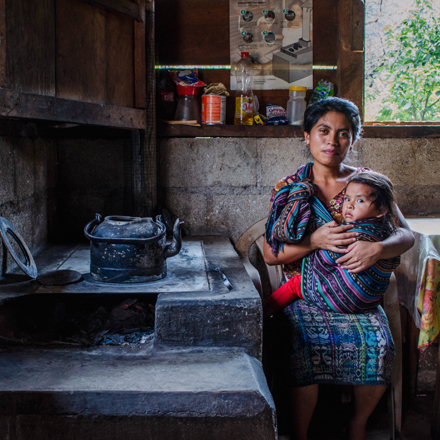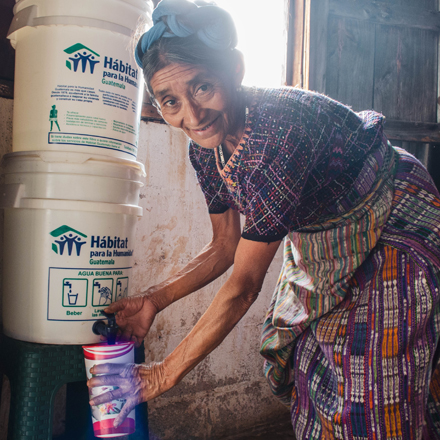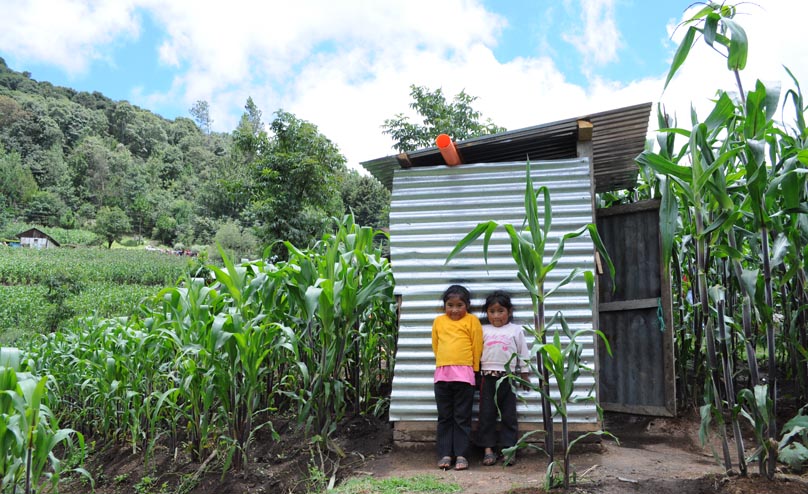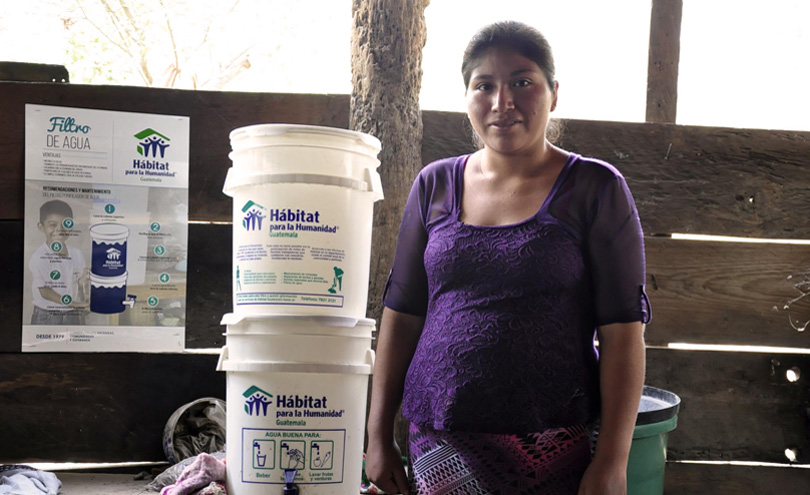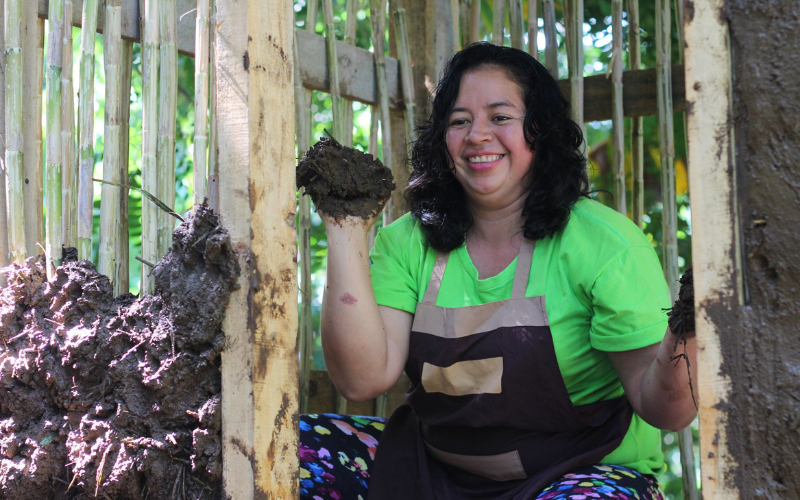Poverty is a rapidly growing problem in Guatemala. Three in every five (60%) people survive on less than $4 USD per day and millions live in dangerously unhealthy conditions. Less than half of Guatemalans have access to proper sanitation services – 95% of water is contaminated as a result. Waterborne diseases cause 40% of infant mortality and more than half the population suffers from respiratory illnesses.
Habitat for Humanity Guatemala is tackling these interlinking issues through its Healthy Homes for Humanity programme. The project provides families living in poverty with three basic services to improve their health and quality of life: a smokeless stove, water filter and sanitary latrine.
Families are involved in the entire process and learn how to assemble, use and maintain each product. Each family makes a 5% contribution to the cost, the remainder of which is funded through the programme’s $675,000 USD annual budget.
The programme began in 2010 and is now active across all of Guatemala’s 22 administrative departments. Over the past few years, the number of Healthy Homes solutions implemented has increased by an average of 16% each year, benefitting around 300,000 marginalised and vulnerable people through improved health, dignity and self-empowerment.


